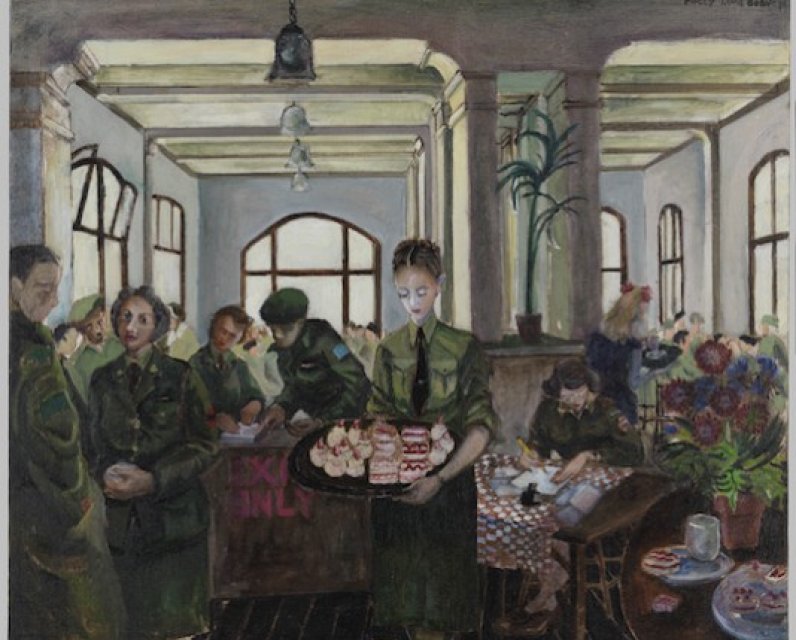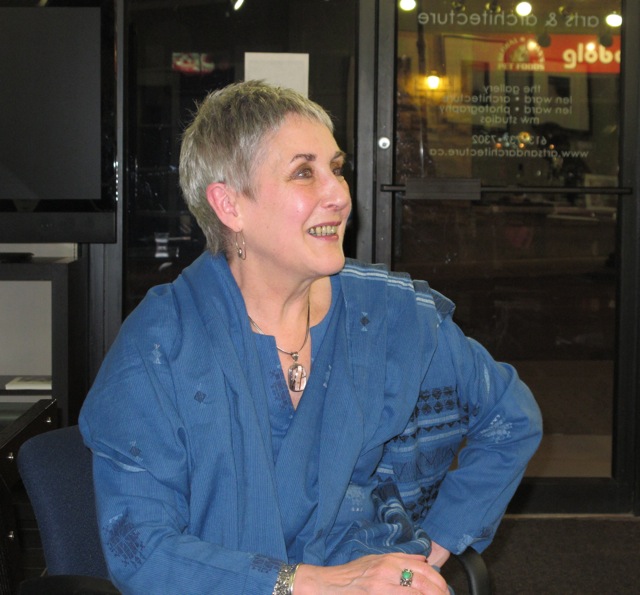Warning message
- Last import of users from Drupal Production environment ran more than 7 days ago. Import users by accessing /admin/config/live-importer/drupal-run
- Last import of nodes from Drupal Production environment ran more than 7 days ago. Import nodes by accessing /admin/config/live-importer/drupal-run
Unpublished Opinions
Maureen Korp, PhD is an independent scholar, curator, and writer whose home base is Ottawa, Ontario Canada. Author of many publications, Dr. Korp has lectured at universities in Europe, S.Asia, and North America on the intertwined histories of art and religions. From 2008-10, she was associate professor, history of art, architecture, and design at Beaconhouse National University, Pakistan.
Dr. Korp's research area is land-based art. Her best-known book is Sacred Art of the Earth: Ancient and Contemporary Earthworks (1997).
The Legacy of Canada’s First Female War Artist

Ten small oil paintings by Molly Lamb Bobak have recently been installed in a memorial exhibition at the Canadian War Museum. Bobak (1920-2014) was the last of Canada’s WWII war artists.
Bobak joined the Canadian Women’s Army Corps in 1942. In 1945 she was sent to the Netherlands, making her the first Canadian woman to be sent anywhere overseas as an official war artist. The Canadian War Museum has 115 of her artworks among its holdings.
The 10 paintings displayed are all, at first glance, genre paintings of military life on the base. One, for example, is of a cook standing at a big stove in the mess hall, while another shows the mail being sorted. In yet another, people are milling about a Salvation Army tea wagon. Where is the war?
Look again. There are stories—complicated stories—being told in these 10 paintings, too. Each painting is carefully composed, its figures standing within blocks of order and regimentation. Is everything what it seems to be? No. There’s more than one angle to this tale. In these paintings, Bobak has done her best to tell the story she knew, including questions never voiced.
The painting titled “Canteen, Nijmegen, Holland,” for example, presents a bright, sunny room filled with uniformed people chattering away, enjoying a break from their duties. In the very centre of the painting’s composition, a thin, uniformed woman stands quietly looking down at a large tray she is holding—a tray laden with pastries, cakes, and cream puffs.
For whom have these cakes been made? Who had the wherewithal to command such extravagance? In the post-war period, sugar and butter were still being rationed.
In another painting, “Canadian Women’s Army Corps Parade Through Town,” an unspecified flag flies from a building in the far background. What town? What place? All the stores and shops appear to be intact. Only one store has a sign out front that can be read clearly: “Goldsmith.” No windows smashed here—not like the smashed windows of Kristallnacht on Nov. 9, 1938. In that one night, more than 1,000 synagogues and 7,500 Jewish businesses were destroyed throughout Germany, Austria, and the Sudetenland. The destruction was widely reported in the international press. War came soon after.
“Gas Drill” is a painting of eight CWAC women standing in the snow, each in a drab green skirted uniform, all wearing big black gas masks. They stand relaxed in the foreground of the painting, looking at us, the viewer. But in the background, up against a brick wall, is another woman. She is bent over double. Is she tearing off the mask? A panic attack? Claustrophobia?
Our mothers are the first women any of us have ever known. Two of the ten war paintings address the mythic role of women as mothers and nurturers. “CWAC Cook at Work” shows a tall woman standing at a very big stove and behind, on the other side of the railing, are so many, many people waiting to be fed. Two stove pipes and lamps overhead combine to make the scene look like some sort of munitions depot. The artist knows “an army fights on its stomach.”
The second painting, “CWAC Officer Cadets and NCO’s Waiting for the Montreal Train,” depicts a red-roofed, crowded railway station. Snow is falling. From the other side of the tracks, we can see everyone—military men and military women alike—waiting for the train. One figure, however, stands out in the crowd: a priest in full black cassock. There is a railway station sign centred overhead. It reads “Ste Anne.” Anne was the grandmother of Jesus. In wartime, the old bury the young.
All of the 10 paintings in the Bobak exhibition are painstakingly worked compositions. She is not slapdash with her colours. Her brushstrokes are small and short. Finding another tube of paint in wartime may not have been easy. Indeed, none of the artist’s paintings appear to be on stretched canvases. Some of the “canvases” may not even be canvas. Given the inadequate lighting in the corridor where the paintings are hung, it is hard to see them properly.
The careful compositions of the paintings also suggest each one is based on earlier sketches. The artist is known to have kept journal notes and sketchbooks, and these, too, are part of the War Museum’s holdings. Unhappily, the museum has provided little in the way of explanatory material and captioning for the visitor. No dates or chronology are provided for any of the 10 paintings, and only one location is given—Nijmegen, Holland.
The Molly Lamb Bobak exhibition continues at the Canadian War Museum until April 13.
Maureen Korp PhD is an independent scholar, curator, and writer who lives in Ottawa. Author of many publications, she has lectured in Asia, Europe, and North America on the histories of art and religions. Email: miki.korp@gmail.com



Comments
Be the first to comment